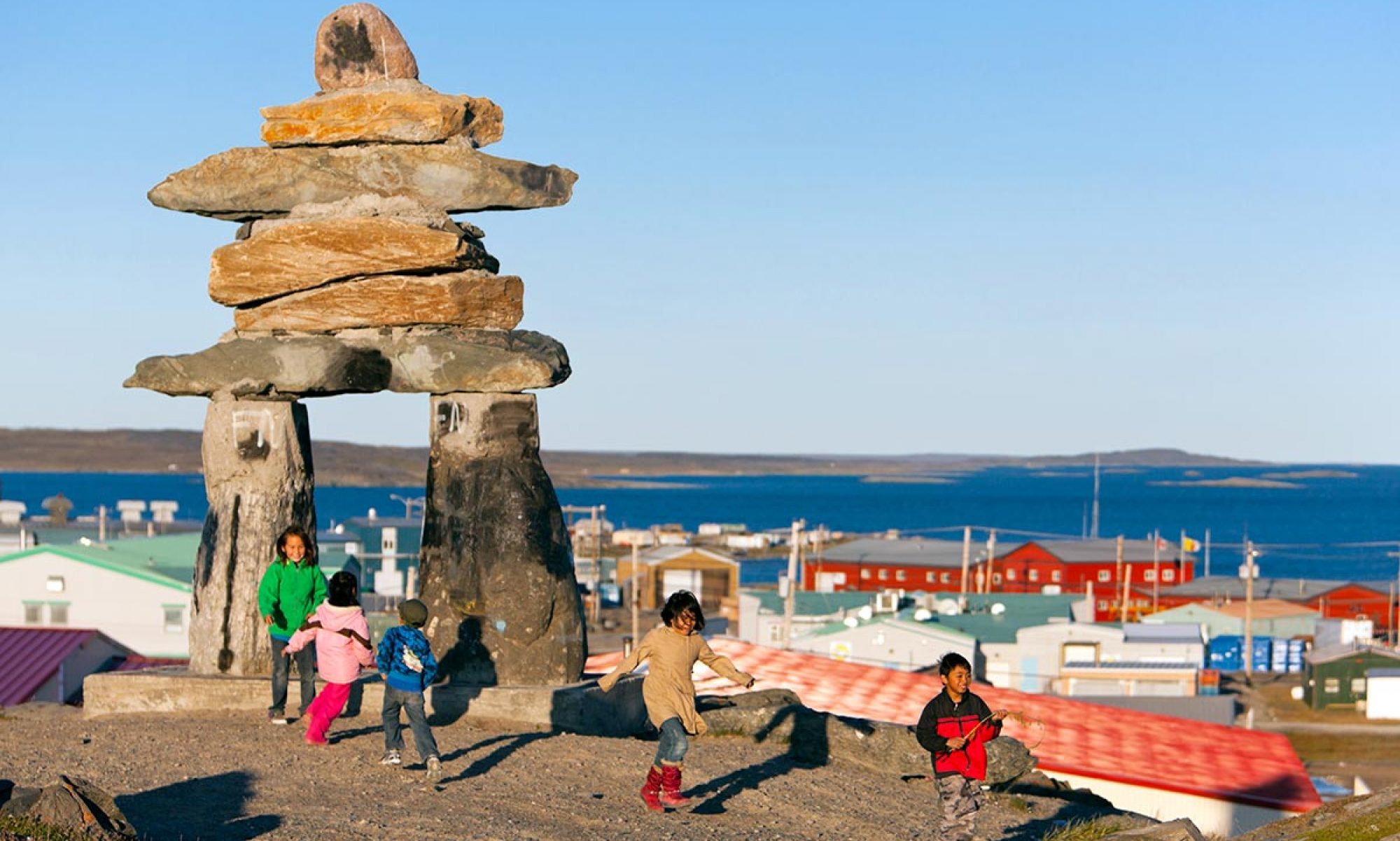The mouth of the Meliadine River is the only nearby area that shows intensive use by historic Inuit. The Thule people came to the area to fish, building stone weirs to channel the arctic char into shallow water where they could be speared. They hunted caribou and seals in the area, and trapped waterfowl. First visited by Europeans in the early 1600’s the Inlet was named for Lt. John Rankin of the British Royal Navy.
In 1721, Captain James Knight and his crew were marooned on Marble Island, about 32 km from Rankin Inlet. Knight was exploring, searching for valuable minerals and the Northwest Passage. His two ships were wrecked in the shallows, and he and his crew of 50 were stranded on the island.
During the Korean War, the price of nickel rose sharply, and the North Rankin Nickel Mine was opened. The mine operated from 1957 to 1962 when a combination of declining prices and depletion of the ore body forced closure of the mine.
Many Inuit came in off the land to work in the mine during those years, and some moved on to work in mines in Yellowknife, Flin Flon and elsewhere. The population of Rankin Inlet dwindled to about 320 in 1964.
Federal work projects were established in Rankin Inlet in the mid-1960’s. This included a ceramics project, where local Inuit were taught how to create a “Northern” style of ceramics which included images of local wildlife. These artifacts were later sold to southern Art Galleries.
A soapstone carving project was also undertaken at the same time. Many local artists were able to establish themselves in the Art World. Some famous local carvers are Pierre Karlik, Joachim Kavik, Patrick Kabluitok, Edward Kabluitok, and Simeonie Hakuluk – their work can be purchased locally.
In the early 1970’s, the Government of Northwest Territories moved its regional headquarters to Rankin Inlet, and the community began to grow. An independent spirit of entrepreneurship development, and today a multitude of small businesses flourish. Most are partially or completely Inuit-owned.
On April 1st, 1999 the Government of Nunavut was formed and separated from the Northwest Territories. The boundaries were set in 1993 via the Nunavut Act and Nunavut Land Claims Agreement Act. This was an outstanding accomplishment for the people of Nunavut. It made Nunavut Canada’s newest and largest territory and the fourth largest country sub-division in the world.
